
Segovia: A Tapestry of History and Beauty
Discover Segovia, a historic Spanish city known for its stunning Roman aqueduct, fairy-tale castle, and Gothic cathedral, all nestled in a picturesque landscape.
Segovia, a gem in the heart of Spain, is a city where history and beauty intertwine seamlessly. Renowned for its stunning Roman aqueduct, this UNESCO World Heritage site offers a journey through time, from ancient Roman engineering to medieval castles and Gothic cathedrals. The aqueduct, with its towering arches, is a marvel of ancient engineering and a testament to the city's historical significance. Wander through Segovia's narrow, cobblestone streets, and you'll find yourself surrounded by charming plazas and historic buildings. The Alcázar of Segovia, a fairy-tale castle perched on a rocky hill, offers breathtaking views of the surrounding landscape. Its blend of architectural styles, from Romanesque to Gothic, is a visual delight. Nearby, the Segovia Cathedral, with its intricate Gothic design, stands as one of Spain's most impressive religious structures. Segovia is also a culinary haven. Savor the city's famed roast suckling pig, 'cochinillo,' in one of its many traditional restaurants. The local cuisine, rich in flavor and tradition, will leave a lasting impression. Don't forget to explore the bustling markets and try local delicacies. Whether you're a history buff, a food enthusiast, or simply looking to immerse yourself in the beauty of Spanish culture, Segovia offers a captivating experience that will stay with you long after you leave.
Local tips in Segovia
- Visit early in the morning to avoid crowds at the Roman aqueduct.
- Wear comfortable shoes for walking on cobblestone streets.
- Try the local specialty, 'cochinillo,' at a traditional restaurant.
- Check the opening hours of the Alcázar and Cathedral as they can vary.
- Don't miss the chance to explore the local markets for unique souvenirs.
Segovia: A Tapestry of History and Beauty
Segovia, a gem in the heart of Spain, is a city where history and beauty intertwine seamlessly. Renowned for its stunning Roman aqueduct, this UNESCO World Heritage site offers a journey through time, from ancient Roman engineering to medieval castles and Gothic cathedrals. The aqueduct, with its towering arches, is a marvel of ancient engineering and a testament to the city's historical significance. Wander through Segovia's narrow, cobblestone streets, and you'll find yourself surrounded by charming plazas and historic buildings. The Alcázar of Segovia, a fairy-tale castle perched on a rocky hill, offers breathtaking views of the surrounding landscape. Its blend of architectural styles, from Romanesque to Gothic, is a visual delight. Nearby, the Segovia Cathedral, with its intricate Gothic design, stands as one of Spain's most impressive religious structures. Segovia is also a culinary haven. Savor the city's famed roast suckling pig, 'cochinillo,' in one of its many traditional restaurants. The local cuisine, rich in flavor and tradition, will leave a lasting impression. Don't forget to explore the bustling markets and try local delicacies. Whether you're a history buff, a food enthusiast, or simply looking to immerse yourself in the beauty of Spanish culture, Segovia offers a captivating experience that will stay with you long after you leave.
When is the best time to go to Segovia?
Iconic landmarks you can’t miss
Acueducto de Segovia
Explore the iconic Aqueduct of Segovia, a UNESCO World Heritage site and a stunning example of Roman engineering that defines the city's skyline.

Alcázar de Segovia
Explore the enchanting Alcázar de Segovia, a historical castle that offers breathtaking views and a rich tapestry of Spanish history.
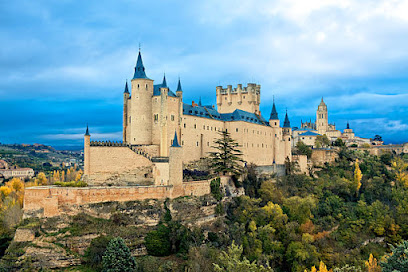
Royal Palace of La Granja of San Ildefonso
Explore the Royal Palace of La Granja of San Ildefonso, a stunning baroque masterpiece surrounded by enchanting gardens in the heart of Segovia, Spain.

Catedral de Segovia
Explore the breathtaking Catedral de Segovia, a stunning Gothic masterpiece offering rich history, artistic beauty, and panoramic city views.

Plaza Mayor
Explore the vibrant Plaza Mayor in Segovia, a historical landmark brimming with culture, stunning architecture, and lively local events.
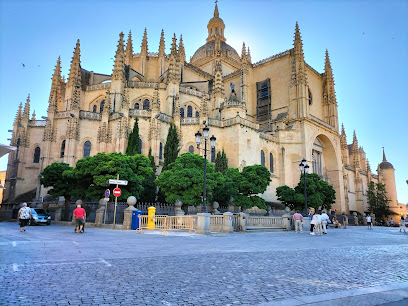
Mirador de la Pradera de San Marcos
Experience stunning panoramic views of Segovia's landmarks from the Mirador de la Pradera de San Marcos, a must-visit observation deck in Spain.
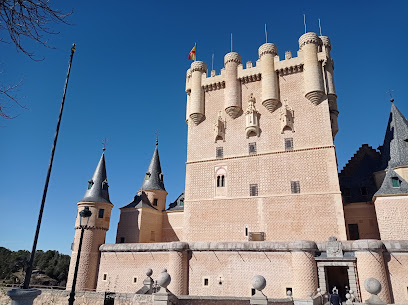
Museo Real Casa de Moneda de Segovia
Explore the history of coin production and discover the artistry behind currency at the Museo Real Casa de Moneda de Segovia.
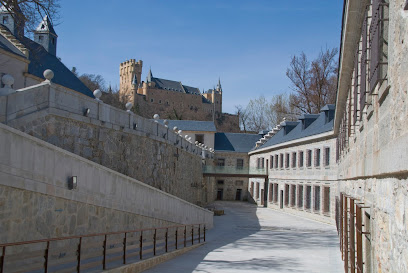
Puerta de San Andrés
Explore the iconic Puerta de San Andrés, a historical gem in Segovia, Spain, offering breathtaking views and a glimpse into the city's rich past.

Plaza de Medina del Campo
Explore the enchantment of Plaza de Medina del Campo, a vibrant square in Segovia, surrounded by stunning architecture and rich cultural history.
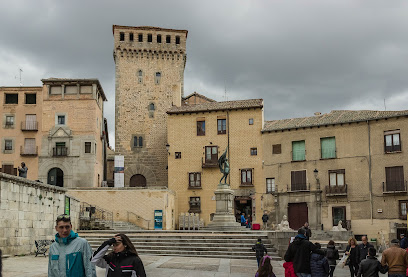
Iglesia de San Millán
Discover the captivating beauty and rich history of Iglesia de San Millán, a must-visit Catholic church in the heart of Segovia.
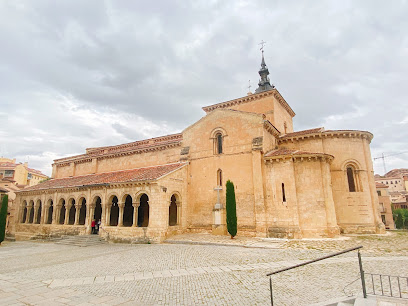
Plaza de la Merced
Explore the vibrant Plaza de la Merced, a beautiful park in Segovia filled with history, culture, and picturesque views.

Iglesia de la Vera Cruz
Discover the serene beauty and historical significance of Iglesia de la Vera Cruz in Segovia, a must-visit Catholic church and cultural landmark.
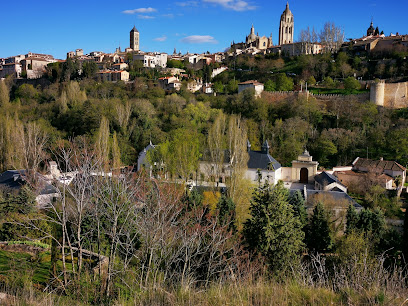
Casa De Los Picos
Discover the architectural marvel of Casa De Los Picos in Segovia, an iconic historical landmark showcasing unique granite artistry and rich cultural heritage.

Monastery of Santa María del Parral
Discover the serene Monastery of Santa María del Parral, a historic architectural marvel nestled in the heart of Segovia, rich in art and tranquility.
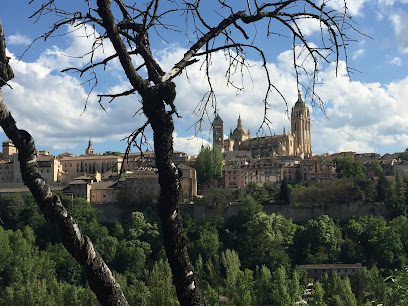
Mirador de la Canaleja
Experience stunning views of Segovia's iconic aqueduct and historic architecture at Mirador de la Canaleja, a perfect observation deck for travelers.
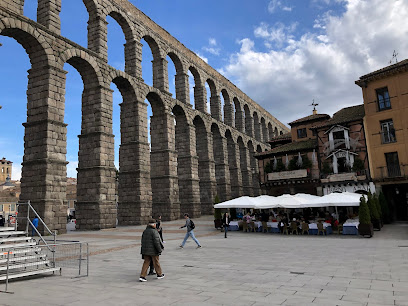
Unmissable attractions to see
Alcázar de Segovia
Discover the enchanting Alcázar de Segovia, a historical castle that showcases stunning architecture and breathtaking views in the heart of Spain.
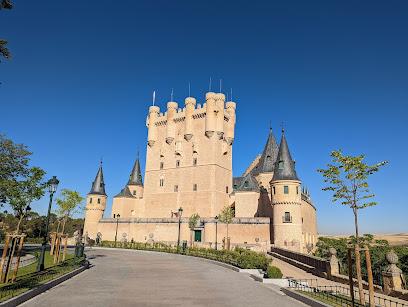
Royal Site of San Lorenzo de El Escorial
Explore the Royal Site of San Lorenzo de El Escorial, a UNESCO World Heritage Site showcasing Spain's rich history and stunning Renaissance architecture.
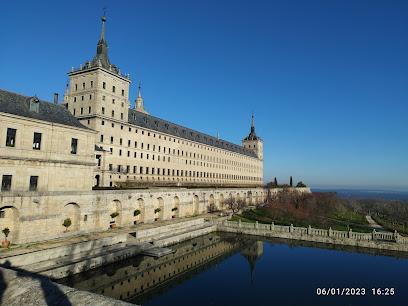
Royal Palace of La Granja of San Ildefonso
Discover the grandeur of the Royal Palace of La Granja de San Ildefonso, a stunning Baroque masterpiece with breathtaking gardens and rich history.

Catedral de Segovia
Explore the stunning Gothic architecture and rich history of the Catedral de Segovia, a must-visit tourist attraction in Spain's beautiful Segovia.
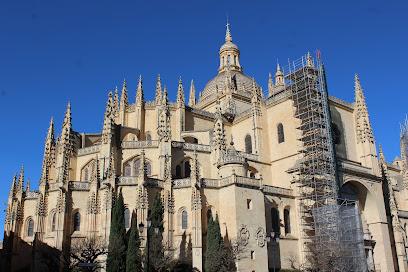
Finca de Cuelgamuros
Explore Finca de Cuelgamuros, a sacred site in San Lorenzo de El Escorial dedicated to remembrance, history, and natural beauty.
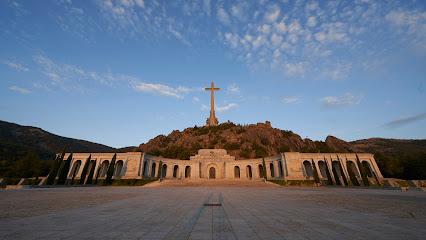
Silla de Felipe II
Explore the breathtaking views and rich history of Silla de Felipe II, a top tourist attraction and hiking area near Madrid.
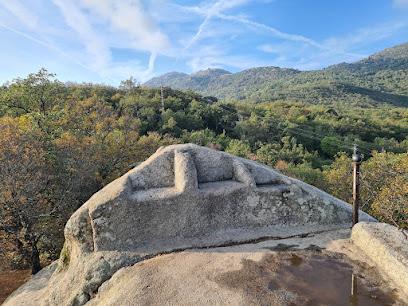
Parque Natural Hoces del Río Duratón
Explore the breathtaking landscapes of Parque Natural Hoces del Río Duratón, a serene nature preserve in Segovia perfect for hiking, birdwatching, and relaxation.
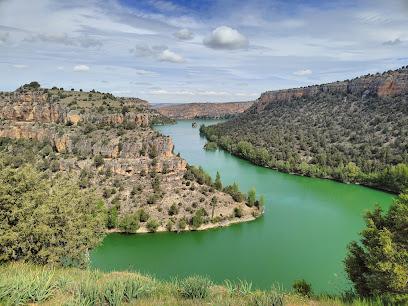
Riofrío Royal Palace
Explore the stunning Riofrío Royal Palace in Segovia, a captivating blend of history, architecture, and nature, surrounded by lush forests and serene gardens.
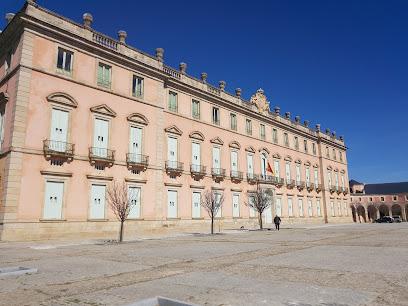
Mirador de la Pradera de San Marcos
Experience the stunning vistas and historical charm of Segovia at the Mirador de la Pradera de San Marcos, your gateway to breathtaking views.
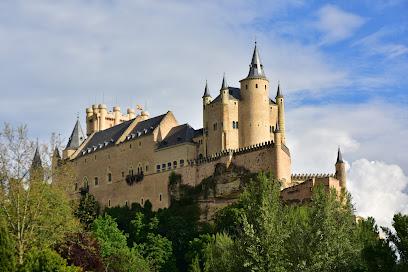
Frailes Garden
Experience the tranquility of Frailes Garden, a serene park in San Lorenzo de El Escorial, offering stunning landscapes and rich history.
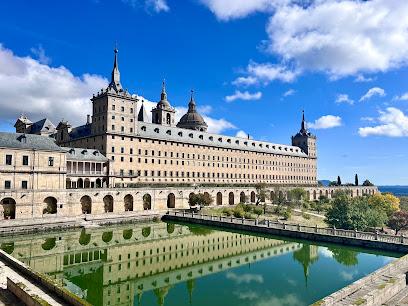
Museo Real Casa de Moneda de Segovia
Explore the fascinating history of minting and currency at Museo Real Casa de Moneda de Segovia, where tradition meets technology.
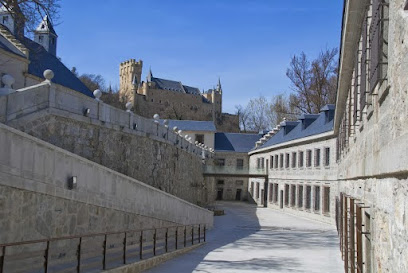
Puerta de San Andrés
Explore the stunning Puerta de San Andrés, a historic gateway in Segovia that embodies the city's rich cultural heritage and architectural beauty.
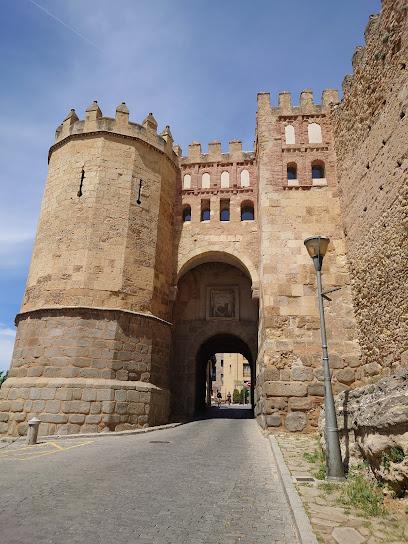
Plaza de Medina del Campo
Immerse yourself in the cultural heart of Segovia at Plaza de Medina del Campo, a vibrant square filled with history, architecture, and local charm.
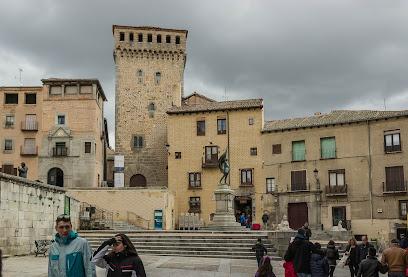
Casa-Museo de Antonio Machado
Explore the Casa-Museo de Antonio Machado in Segovia, a literary haven dedicated to the famed Spanish poet and his poetic legacy.
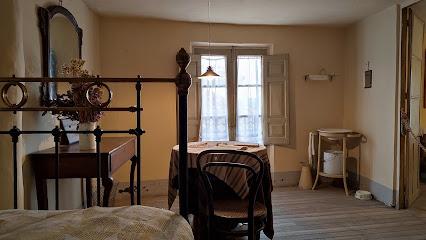
Iglesia de San Millán
Discover the architectural beauty and historical significance of Iglesia de San Millán, a must-visit Catholic church in Segovia, Spain.
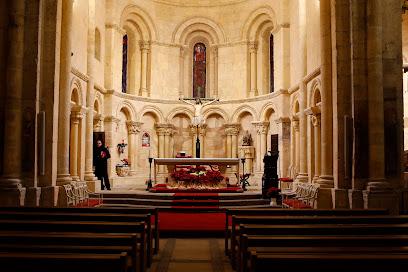
Essential places to dine
Restaurante José María
Experience authentic Spanish cuisine with exceptional tapas at Restaurante José María in historic Segovia.
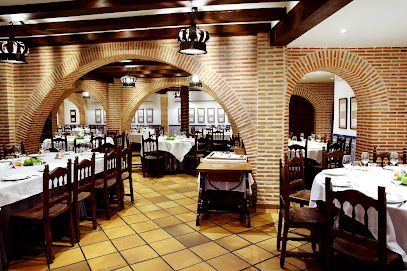
Restaurante El Sitio
Experience authentic Castilian cuisine at Restaurante El Sitio in Segovia, where tradition meets flavor in every dish.
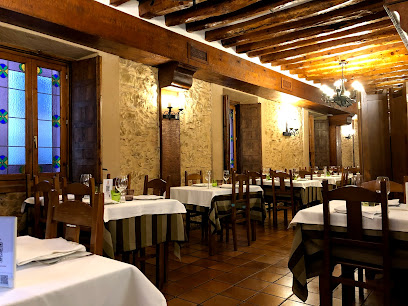
Mesón De Cándido | Restaurante en Segovia
Experience exquisite Castilian cuisine at Mesón De Cándido in Segovia - home of exceptional mutton barbecue and fine dining.

Restaurante Asador Maribel
Experience authentic Spanish cuisine at Restaurante Asador Maribel in Segovia—home of exquisite mutton barbecue and grill specialties.
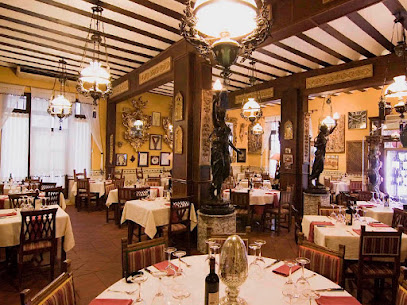
Restaurante El Bernardino
Experience authentic Spanish cuisine at Restaurante El Bernardino in Segovia – where every meal tells a story.

Asador David Guijarro
Experience authentic Castilian cuisine at Asador David Guijarro in Segovia – where tradition meets flavor in every dish.
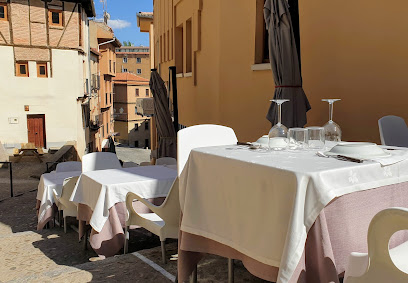
Restaurante Muñoz
Discover authentic Spanish flavors at Restaurante Muñoz, where exquisite mutton barbecue meets traditional culinary artistry in the heart of Segovia.
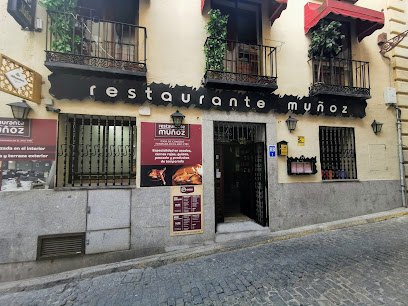
Restaurante La Codorniz
Discover the authentic taste of Castilian cuisine at Restaurante La Codorniz in Segovia—where tradition meets flavor.
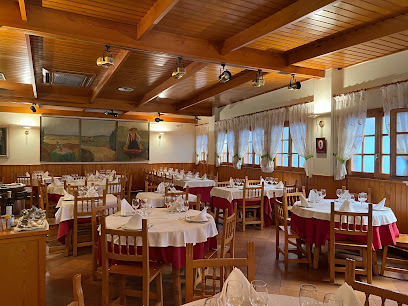
El Secreto de San Clemente
Discover authentic Spanish cuisine at El Secreto de San Clemente in Segovia - where tradition meets modern flavors in a charming setting.
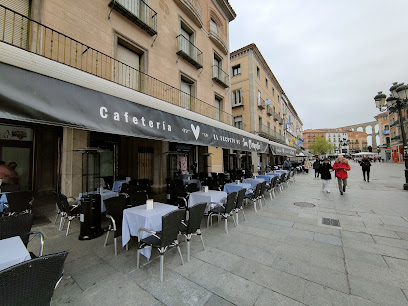
Restaurante Casa Duque
Experience authentic Spanish cuisine at Restaurante Casa Duque in Segovia, specializing in traditional mutton barbecue and local flavors.
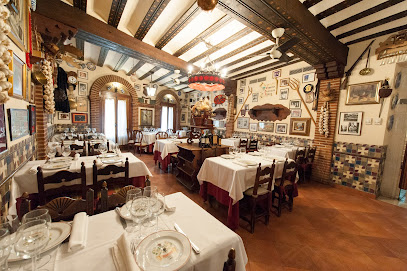
Restaurante Casares
Discover authentic Mediterranean and Spanish cuisine at Restaurante Casares in Segovia – where tradition meets flavor.
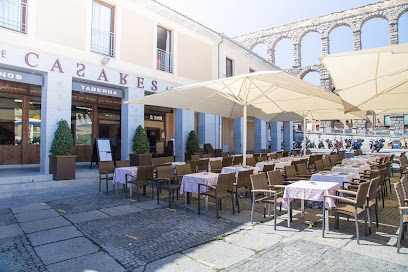
El Figón de los Comuneros
Experience authentic Castilian cuisine at El Figón de los Comuneros in Segovia—delicious grilled meats and local flavors await!
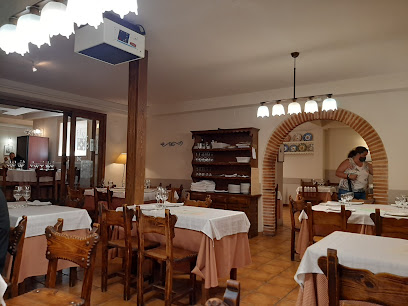
El Redebal
Experience authentic Mediterranean cuisine at El Redebal in Segovia – where every dish tells a story of flavor and tradition.
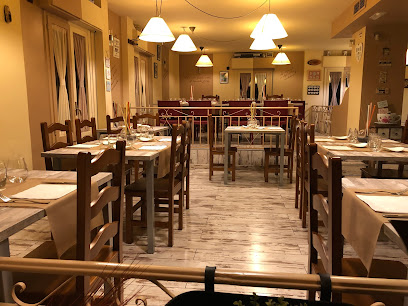
Restaurante Pasapán
Experience authentic Mediterranean flavors at Restaurante Pasapán in Segovia - where tradition meets taste.
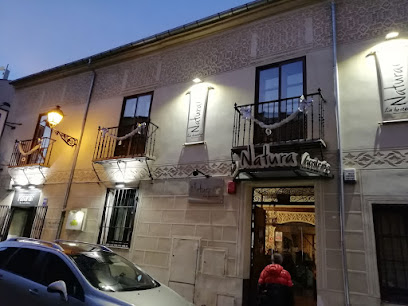
Restaurante La Panera
Discover authentic Spanish flavors at Restaurante La Panera in Segovia—where every meal tells a story of tradition and taste.
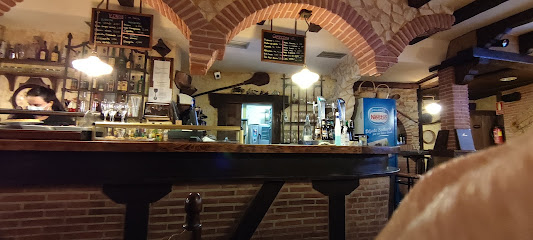
Markets, malls and hidden boutiques
Centro Comercial Luz de Castilla
Experience the vibrant shopping culture of Segovia at Centro Comercial Luz de Castilla, where fashion, dining, and entertainment meet.
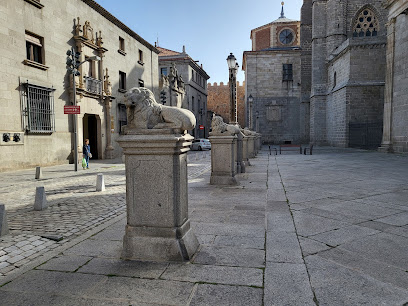
Diablo Cojuelo - Espacio Gastronómico
Explore the flavors of Segovia at Diablo Cojuelo, where gourmet grocery shopping meets delightful tapas and local wines.
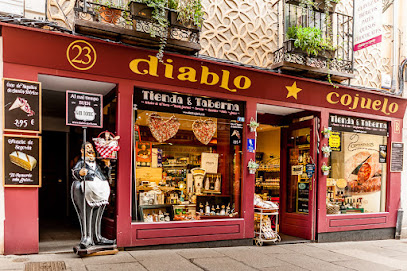
ALE-HOP
Explore ALE-HOP in Segovia for an eclectic selection of gifts, fashion accessories, and home goods that capture the essence of your travels.
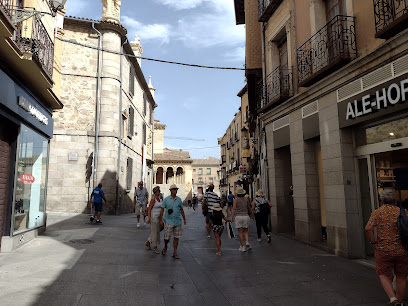
Mercería El Almacén (Segovia)
Explore the enchanting Mercería El Almacén in Segovia for exquisite fabrics, sewing supplies, and unique lingerie that celebrate local craftsmanship.
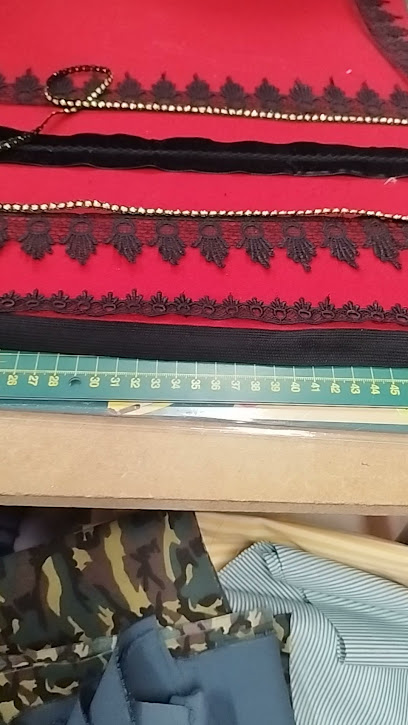
Todoutil Multitienda
Explore Todoutil Multitienda in Segovia, a versatile gift shop offering unique souvenirs, educational supplies, and local crafts for every traveler.

Kukul Segovia
Discover Kukul Segovia, a unique novelty store in Segovia offering exquisite clothing, handicrafts, and jewelry that captures the essence of local artistry.
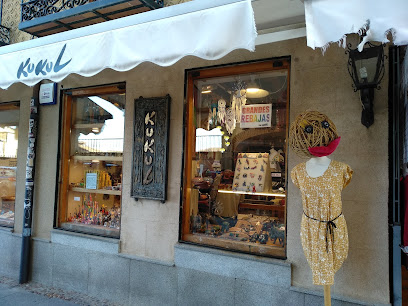
Galerías Rosado
A vibrant shopping hub in Segovia offering sporting goods, bicycles, costumes, and more for all your adventure needs.
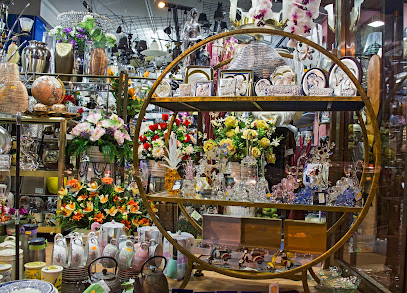
Segovia Duck Store
Shop unique souvenirs and local handicrafts at Segovia Duck Store, a charming destination for tourists seeking memorable keepsakes.
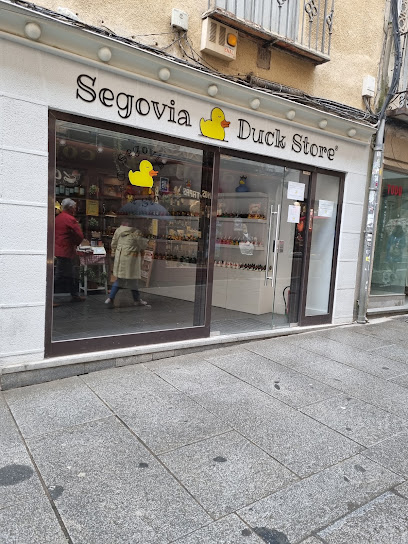
El Bazar de las Labores
Discover a treasure trove of crafting supplies at El Bazar de las Labores, the ultimate destination for fabric and needlework enthusiasts in Segovia.
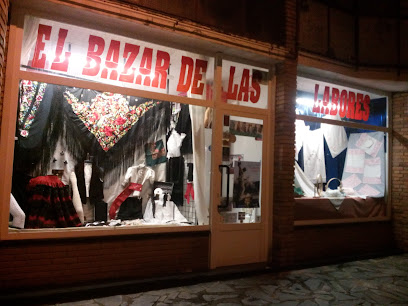
montón de trigo montón de paja
Explore Montón de Trigo Montón de Paja, a charming gift shop in Segovia, featuring unique handicrafts, clothing, and local artistry.
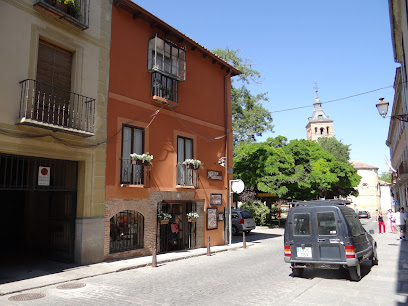
La Casita del Segoviano
Discover unique local crafts and souvenirs at La Casita del Segoviano, a charming gift shop in the heart of Segovia, Spain.
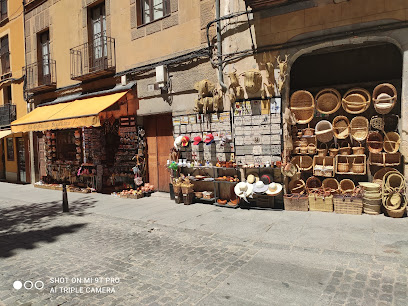
Flying Tiger Copenhagen
Explore Flying Tiger Copenhagen in Segovia for an unforgettable shopping experience filled with unique gifts, toys, and home essentials that spark joy.
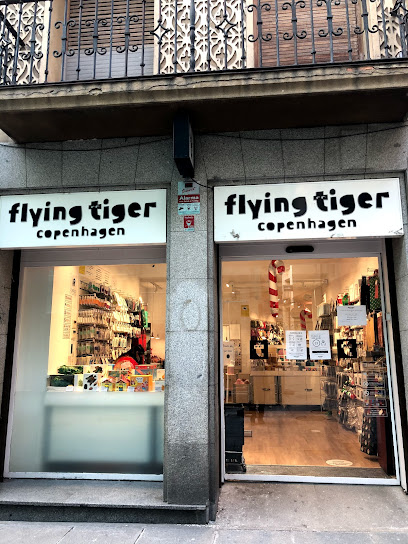
Boutique Chelsa
Discover unique styles at Boutique Chelsa, Segovia's premier dress store offering a curated selection of contemporary and classic fashions.
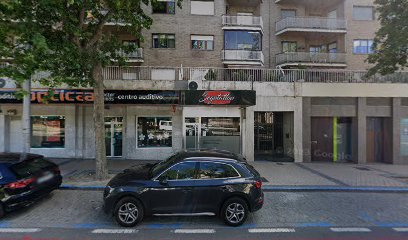
EL SEGOVIANO Modas y Complementos
Explore EL SEGOVIANO Modas y Complementos, a premier outerwear store in Segovia, offering a chic selection of stylish clothing and accessories.
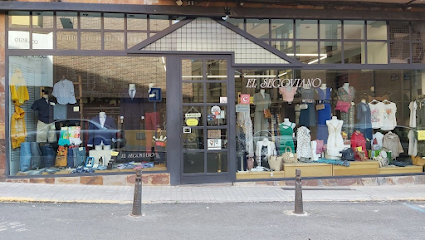
MISAKO Segovia
Explore MISAKO Segovia for exquisite handbags and accessories that embody Spanish craftsmanship and style, perfect for any discerning traveler.
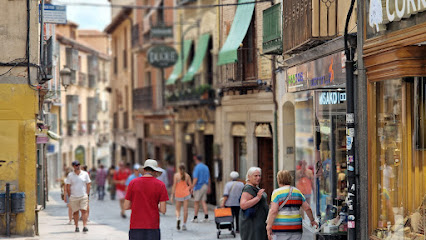
Essential bars & hidden hideouts
El Secreto de San Clemente
Discover the culinary treasures of El Secreto de San Clemente in Segovia, where traditional flavors meet contemporary dining in a vibrant atmosphere.
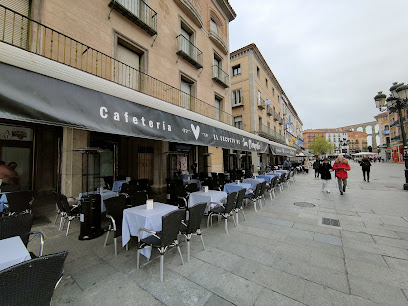
Pub Celia
Experience the charm of Segovia at Pub Celia, a lively bar where live piano music meets delightful drinks in an inviting atmosphere.
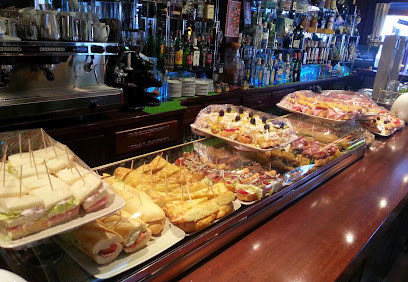
Bar Santana
Discover Bar Santana in Segovia, where lively ambiance meets delicious tapas and refreshing drinks, perfect for unwinding after a day of exploration.
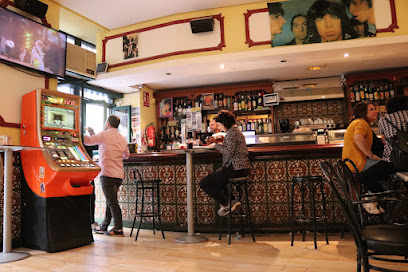
De Bote en Bote
Explore the flavors of Spain at De Bote en Bote, a tapas bar in Segovia offering authentic cuisine and a lively atmosphere.
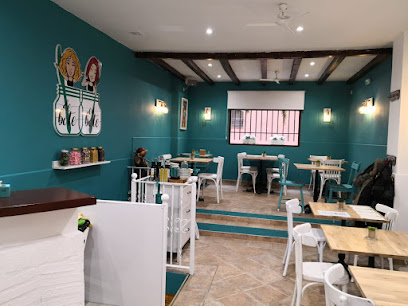
Bar Rubi
Discover the vibrant atmosphere and authentic flavors of Bar Rubi, Segovia's charming brewpub with craft beers and delightful tapas.
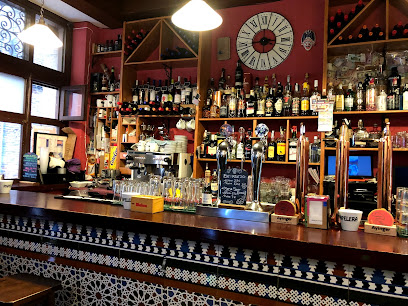
Pub La Escalera - Segovia
Dive into the energetic nightlife at Pub La Escalera, a must-visit pub in Segovia known for its lively atmosphere and diverse drink selection.
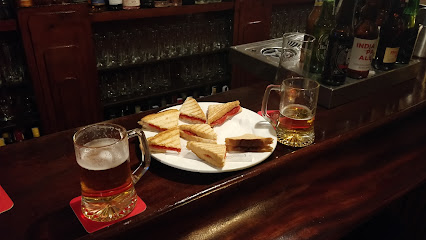
Shout bar - Segovia
Experience the vibrant nightlife of Segovia at Shout Bar, where great drinks and a lively atmosphere await every visitor.
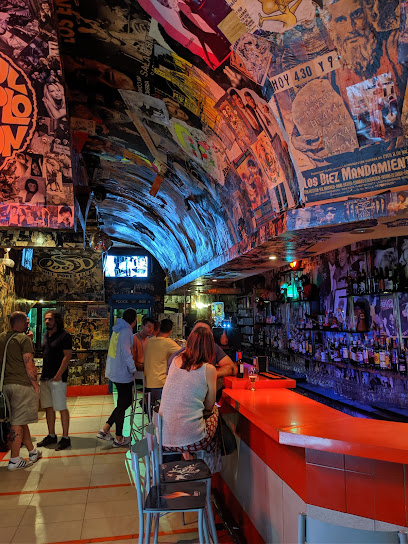
Bar Ven Ven - Segovia
Discover the charm of Bar Ven Ven in Segovia, where vibrant nightlife meets cozy ambiance and delicious local flavors.
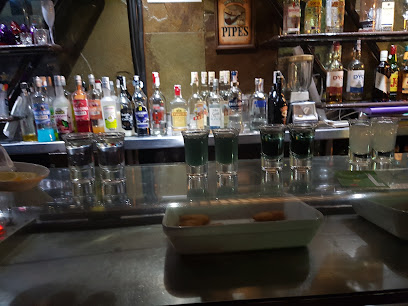
Bar Jeyma
Experience the heart of Segovia at Bar Jeyma, where local flavors and a lively atmosphere come together for an unforgettable visit.
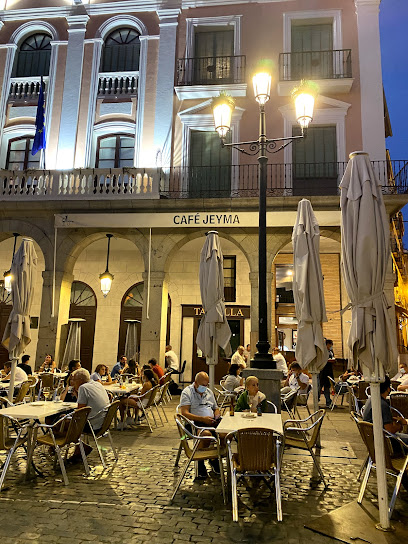
Gin Club Menora
Experience the vibrant nightlife and exquisite gin selection at Gin Club Menora in Segovia, a must-visit bar for tourists seeking local flavor.
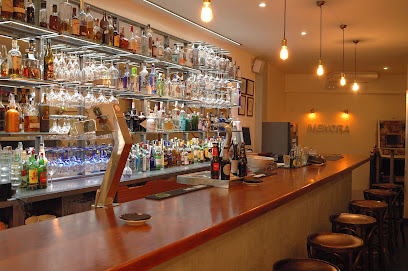
Clandestino
Experience the vibrant nightlife of Segovia at Clandestino, the pub where locals and tourists come together for great drinks and good times.
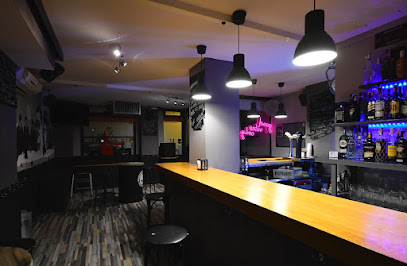
El Ojo Bar Restaurante
Experience the vibrant flavors of Spain at El Ojo Bar Restaurante in Segovia, where tapas and cocktails create unforgettable culinary moments.
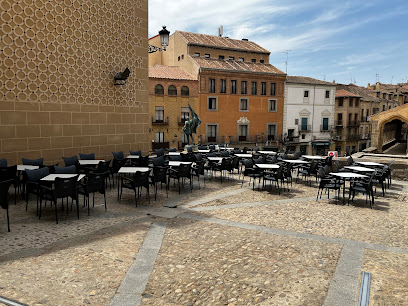
Bar Bahía
Experience the vibrant flavors and friendly atmosphere of Bar Bahía, the perfect spot for tapas and drinks in the heart of Segovia.
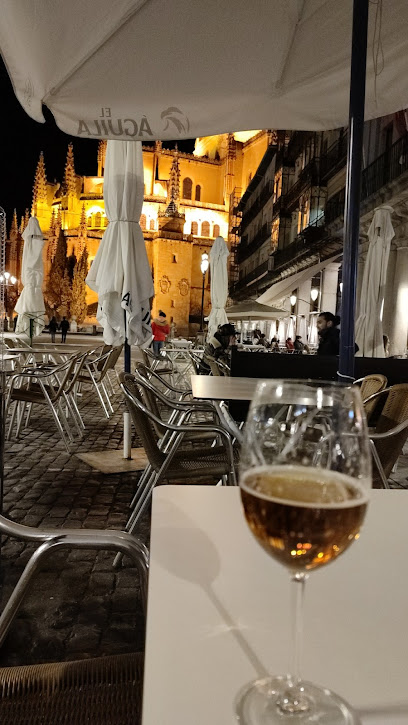
Bar Compás - Segovia
Discover the charm of Bar Compás in Segovia, where delicious tapas and a cozy atmosphere await travelers seeking relaxation and authentic local flavors.
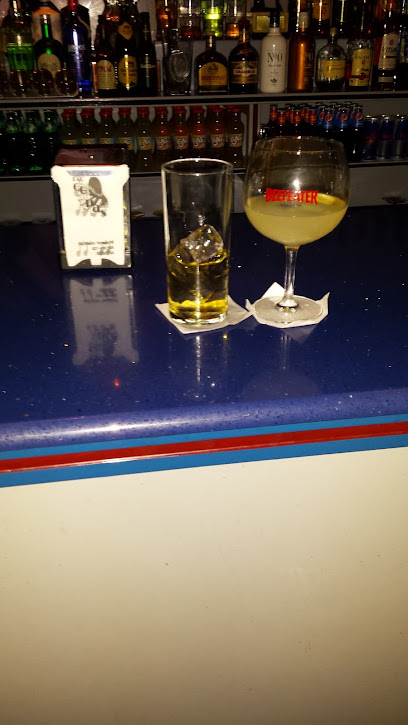
BISBERO BAR
Discover the lively ambiance of Bisbero Bar in Segovia, where delightful drinks meet a vibrant atmosphere for an unforgettable night out.
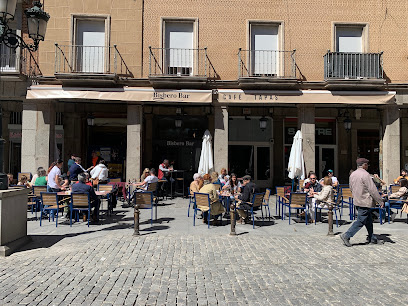
Local Phrases
-
- HelloHola
[oh-lah] - GoodbyeAdiós
[ah-dee-ohs] - YesSí
[see] - NoNo
[noh] - Please/You're welcomePor favor/De nada
[por fah-vor/deh nah-dah] - Thank youGracias
[grah-see-ahs] - Excuse me/SorryPerdón/Lo siento
[pair-dohn/loh see-en-toh] - How are you?¿Cómo estás?
[koh-moh ehs-tahs] - Fine. And you?Bien. ¿Y tú?
[byen. ee too] - Do you speak English?¿Hablas inglés?
[ah-blahs een-glays] - I don't understandNo entiendo
[noh ehn-tee-ehn-doh]
- HelloHola
-
- I'd like to see the menu, pleaseMe gustaría ver la carta, por favor
[meh goos-tah-ree-ah vehr lah kar-tah, por fah-vor] - I don't eat meatNo como carne
[noh koh-moh kahr-neh] - Cheers!¡Salud!
[sah-lood] - I would like to pay, pleaseQuisiera pagar, por favor
[kee-see-eh-rah pah-gar, por fah-vor]
- I'd like to see the menu, pleaseMe gustaría ver la carta, por favor
-
- Help!¡Ayuda!
[ah-yoo-dah] - Go away!¡Vete!
[veh-teh] - Call the Police!¡Llama a la policía!
[yah-mah ah lah poh-lee-see-ah] - Call a doctor!¡Llama a un médico!
[yah-mah ah oon meh-dee-koh] - I'm lostEstoy perdido
[ehs-toy pair-dee-doh] - I'm illEstoy enfermo
[ehs-toy ehn-fehr-moh]
- Help!¡Ayuda!
-
- I'd like to buy...Me gustaría comprar...
[meh goos-tah-ree-ah kohm-prar] - I'm just lookingSolo estoy mirando
[soh-loh ehs-toy mee-rahn-doh] - How much is it?¿Cuánto cuesta?
[kwan-toh kweh-stah] - That's too expensiveEs demasiado caro
[ehs deh-mah-syah-doh kah-roh] - Can you lower the price?¿Puedes bajar el precio?
[pweh-dehs bah-har ehl pree-syo]
- I'd like to buy...Me gustaría comprar...
-
- What time is it?¿Qué hora es?
[keh oh-rah ehs] - It's one o'clockEs la una
[ehs lah oo-nah] - Half past (10)Las diez y media
[lahs dyehs ee meh-dyah] - MorningMañana
[mah-nyah-nah] - AfternoonTarde
[tahr-deh] - EveningNoche
[noh-cheh] - YesterdayAyer
[ah-yehr] - TodayHoy
[oy] - TomorrowMañana
[mah-nyah-nah] - 1Uno
[oo-noh] - 2Dos
[dohs] - 3Tres
[trehs] - 4Cuatro
[kwah-troh] - 5Cinco
[theen-koh] - 6Seis
[says] - 7Siete
[syeh-teh] - 8Ocho
[oh-choh] - 9Nueve
[nweh-veh] - 10Diez
[dyehs]
- What time is it?¿Qué hora es?
-
- Where's a/the...?¿Dónde está...?
[dohn-deh ehs-tah] - What's the address?¿Cuál es la dirección?
[kwal ehs lah dee-rehk-syon] - Can you show me (on the map)?¿Puedes mostrarme (en el mapa)?
[pweh-dehs mohs-trar-meh (ehn ehl mah-pah)] - When's the next (bus)?¿Cuándo es el próximo (autobús)?
[kwan-doh ehs ehl proh-ksee-moh (ow-toh-boos)] - A ticket (to ....)Un billete (a ....)
[oon bee-yeh-teh (ah)]
- Where's a/the...?¿Dónde está...?
History of Segovia
-
One of the most iconic landmarks in Segovia, the Roman Aqueduct, was built in the 1st century AD during the reign of Emperor Domitian. This architectural marvel, constructed without mortar, transported water from the Frío River to the city over a distance of approximately 15 kilometers. The aqueduct stands as a testament to Roman engineering prowess and is remarkably well-preserved, featuring over 160 arches that rise to a height of 28 meters at its tallest point in Plaza del Azoguejo.
-
The Alcázar of Segovia is a medieval fortress that has served multiple roles throughout its history, including a royal palace, a military academy, and a state prison. Originally built as a wooden fort by the Romans, it was later reconstructed in stone by the Moors, and finally transformed into its current Gothic style under the reign of King Alfonso VIII in the 12th century. Its fairy-tale appearance, featuring turrets and a distinctive ship-like shape, has inspired numerous castle designs, including Walt Disney's Cinderella Castle.
-
Known as the 'Lady of Cathedrals,' the Cathedral of Segovia is a stunning example of late Gothic architecture. Construction began in 1525, under the direction of architect Juan Gil de Hontañón, and continued for nearly two centuries. The cathedral boasts a magnificent exterior with intricate stone carvings and a towering spire that reaches a height of 88 meters. Inside, visitors can admire beautiful stained glass windows, numerous chapels, and a richly decorated high altar.
-
The Jewish Quarter of Segovia, known as La Judería, is a historic neighborhood that flourished between the 12th and 15th centuries. This area was home to a vibrant Jewish community until the expulsion of the Jews from Spain in 1492. Visitors can explore the narrow, winding streets and visit the former synagogue, now the Church of Corpus Christi. The Jewish Quarter also includes the Jewish cemetery, located just outside the city walls, where centuries-old tombstones can still be seen.
-
Founded in 1455 by King Henry IV of Castile, the Monastery of San Antonio el Real is a splendid example of Spanish Mudejar architecture, blending Islamic and Christian artistic elements. The monastery's cloisters, with their intricately decorated arches and coffered ceilings, are particularly notable. Inside, visitors can view a collection of religious art, including paintings, sculptures, and illuminated manuscripts.
-
Segovia played a significant role in the Comuneros Revolt of 1520-1521, a major uprising against the rule of King Charles I of Spain. The city's residents joined forces with other Castilian towns in protest against the king's policies and his reliance on foreign advisors. Although the revolt was ultimately crushed at the Battle of Villalar, it remains an important chapter in Spanish history, symbolizing the struggle for local autonomy and resistance against centralized authority.
-
The Segovia Mint, or Real Ingenio de Segovia, was established in 1583 by King Philip II to produce high-quality coinage using advanced machinery. Located on the banks of the Eresma River, it was the first mint in Spain to utilize water-powered rolling mills. The mint operated for over three centuries, until its closure in 1869. Today, the building has been restored and converted into a museum, where visitors can learn about the history of coin production and view original machinery and tools.
Segovia Essentials
-
Segovia is located in the Castile and León region of Spain. The nearest major airport is Adolfo Suárez Madrid-Barajas Airport (MAD) in Madrid, approximately 90 kilometers away. From Madrid, you can take a high-speed train (AVE) from Madrid-Chamartín station to Segovia-Guiomar station, which takes around 30 minutes. Alternatively, you can travel by bus from Madrid's Moncloa station, which takes about 1.5 hours. Renting a car is also an option, providing flexibility to explore the surrounding areas.
-
Segovia is a compact city, and many attractions are within walking distance. Public buses operate within the city and connect to nearby towns and villages. Taxis are readily available and can be hailed on the street or booked in advance. For those looking to explore the region, renting a car is convenient. Segovia also has a good network of cycling paths for those who prefer to bike.
-
The official currency in Spain is the Euro (EUR). Credit and debit cards are widely accepted in hotels, restaurants, and shops. ATMs are plentiful throughout Segovia, allowing for easy cash withdrawals. It is advisable to carry some cash, especially for small purchases or in establishments that may not accept cards.
-
Segovia is generally a safe city for tourists. However, like any travel destination, it is wise to take standard precautions. Avoid displaying valuables openly and be cautious in crowded areas to prevent pickpocketing. The area around the bus and train stations can be busier and might require extra vigilance. It is advisable to avoid poorly lit areas at night.
-
In case of emergencies, dial 112 for immediate assistance, which connects you to police, fire, and medical services. The main hospital in Segovia is the Hospital General de Segovia. Pharmacies are available throughout the city for minor medical needs. It is recommended to have travel insurance that covers medical emergencies.
-
Fashion: Do dress comfortably for walking, but avoid overly casual attire in fine dining restaurants. Religion: Do respect religious sites by dressing modestly and keeping quiet. Public Transport: Do validate your ticket when using buses. Don't eat or drink on public transport. Greetings: Do greet locals with a friendly 'Hola' and a handshake. Eating & Drinking: Do try local delicacies like cochinillo (suckling pig) and ponche Segoviano (a traditional dessert). Don't rush meals; savor the dining experience.
-
To experience Segovia like a local, visit the Mercado de la Albuera, where you can find fresh produce and local specialties. Take a leisurely stroll along the city's medieval walls for panoramic views. Join a local tapas tour to discover hidden culinary gems. Don't miss the chance to walk across the historic Roman aqueduct and visit the Alcázar of Segovia for a glimpse into the city's rich history. For a unique experience, attend a local festival to see traditional music and dance performances.
Trending Landmark in Segovia
-
Acueducto de Segovia
-
Alcázar de Segovia
-
Royal Palace of La Granja of San Ildefonso
-
Catedral de Segovia
-
Plaza Mayor
-
Mirador de la Pradera de San Marcos
-
Museo Real Casa de Moneda de Segovia
-
Puerta de San Andrés
-
Plaza de Medina del Campo
-
Iglesia de San Millán
-
Plaza de la Merced
-
Iglesia de la Vera Cruz
-
Casa De Los Picos
-
Monastery of Santa María del Parral
-
Mirador de la Canaleja
Nearby Cities to Segovia
-
Things To Do in Avila
-
Things To Do in Madrid
-
Things To Do in Valladolid
-
Things To Do in Toledo
-
Things To Do in Salamanca
-
Things To Do in Burgos
-
Things To Do in Bragança
-
Things To Do in Teruel
-
Things To Do in Bilbao
-
Things To Do in Zaragoza
-
Things To Do in Santander
-
Things To Do in Pamplona
-
Things To Do in Chaves
-
Things To Do in Oviedo
-
Things To Do in Vila Real










